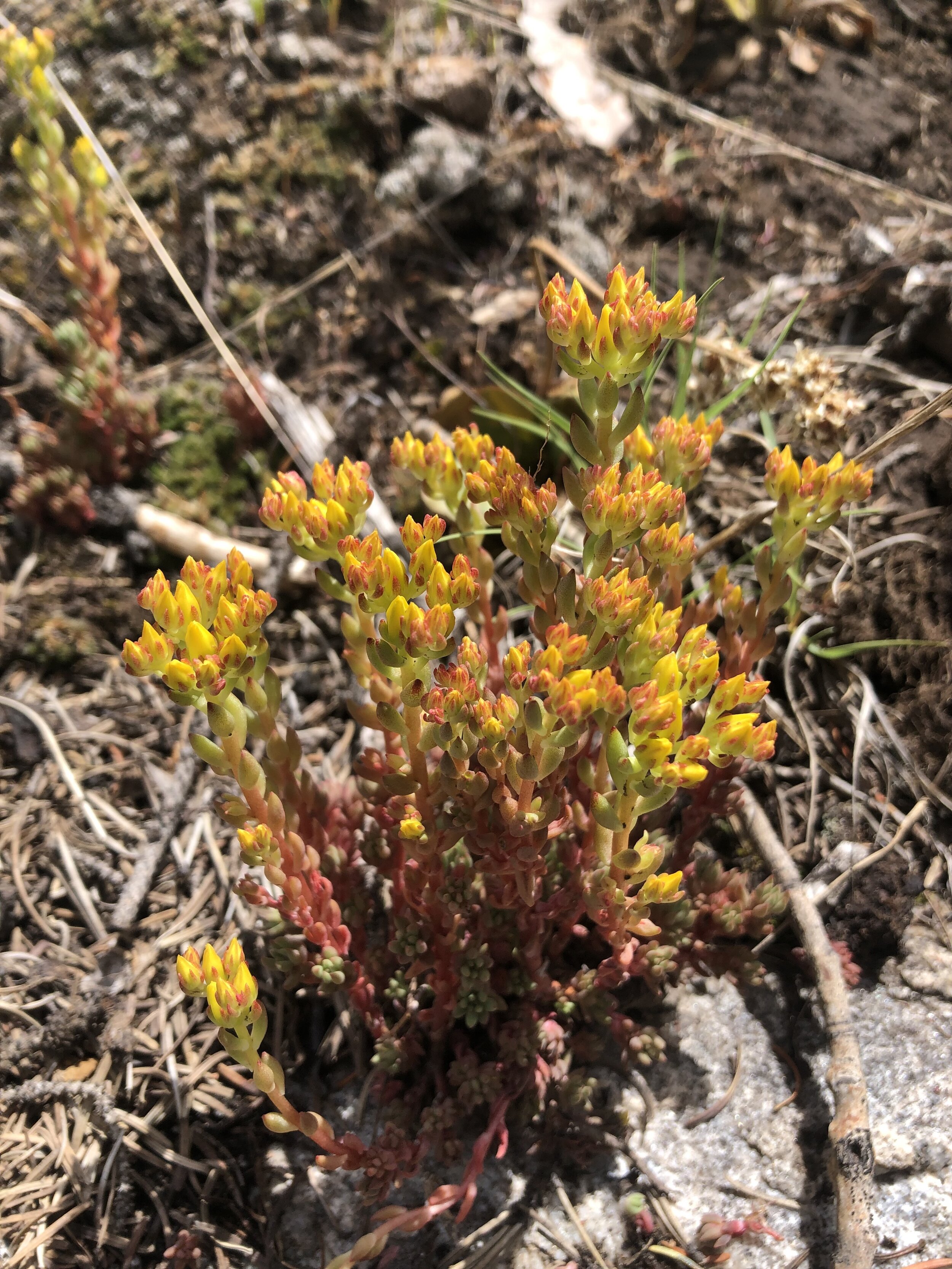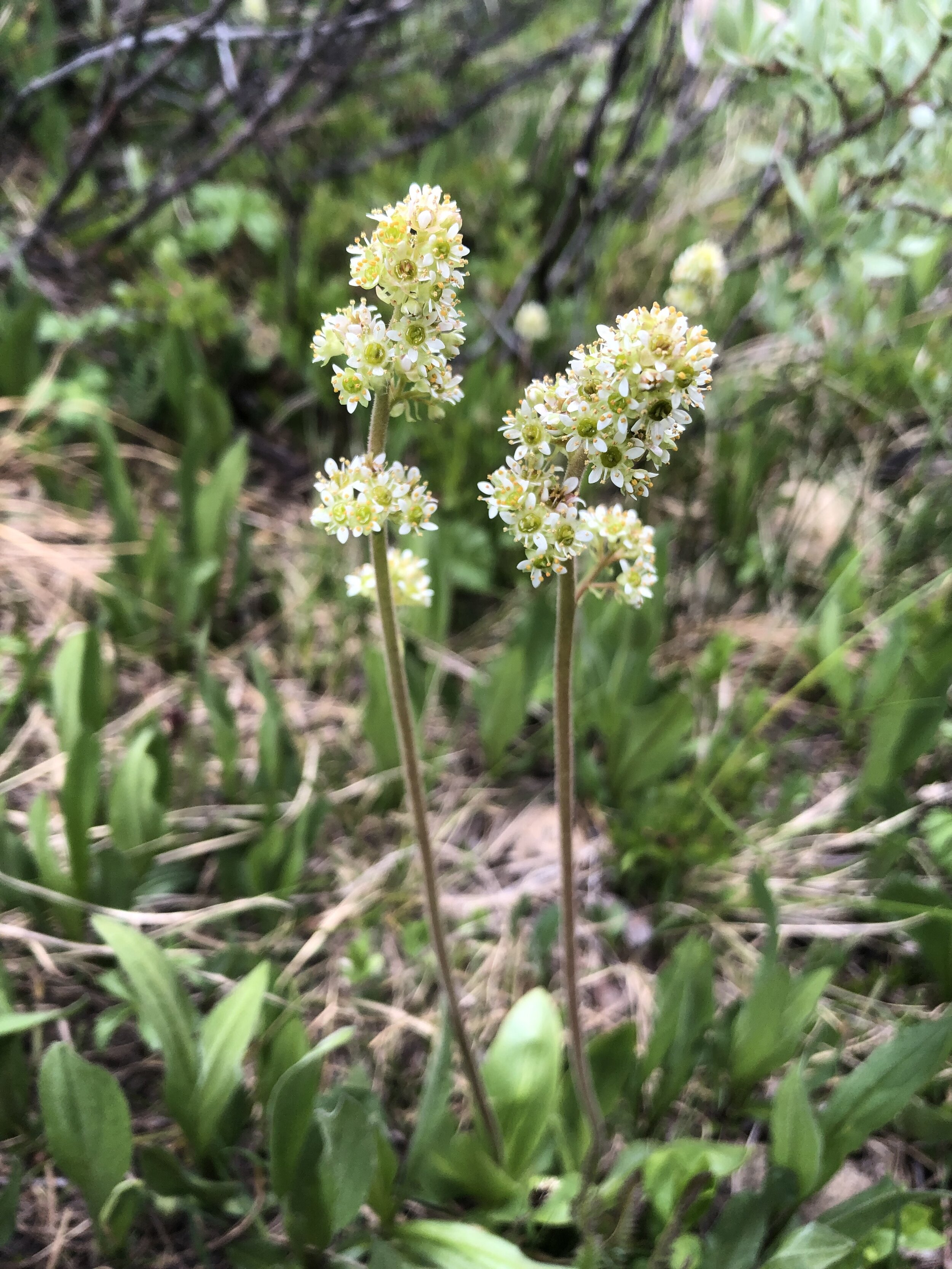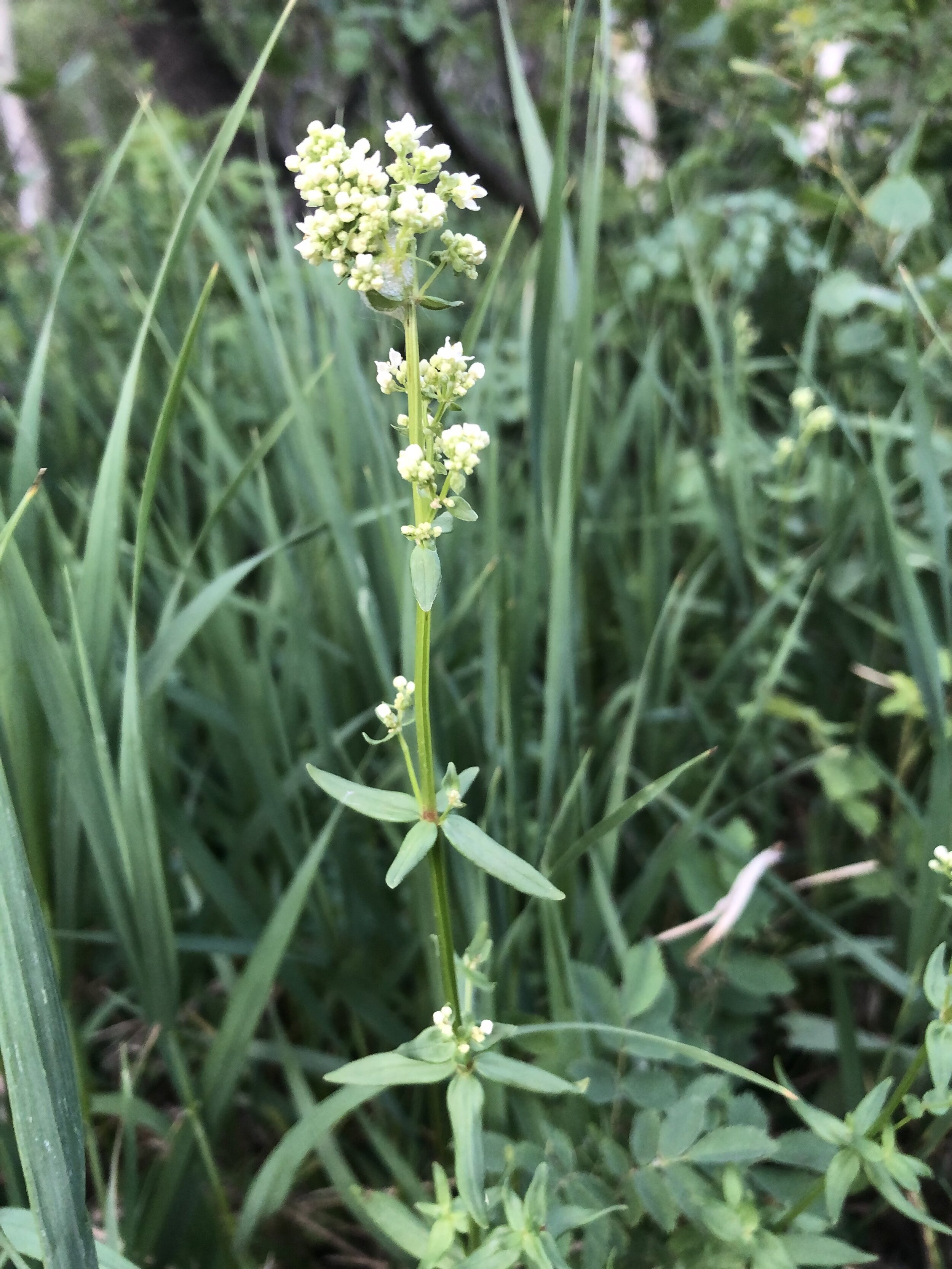Sedum lanceolatum, June 25, 2021
Common & scientific name
Yellow Stonecrop, Sedum lanceolatum
Family
Stonecrop, Crassulaceae
Location
Lincoln Creek, 9,800’
Fun, weird, helpful, or little known fact
Found from the bottom to the top of our valley on exposed, sunny places on rocks or gravelly soil, with yellow, star-like flowers, maroon stems, and succulent leaves. In the same family as King’s and Queen’s Crown.
S. lanceolatum, S. Fork Lake Creek, 10,400’, July 2, 2021






























